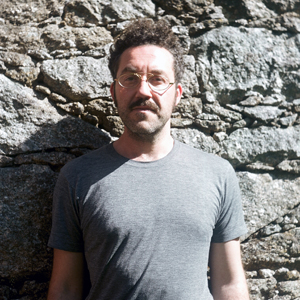BIO
David Ferrando Giraut (Negreira, A Coruña; 1978). BA in Fine Arts from the Universitat Politècnica de València and an MFA in Fine Art from Goldsmiths College, London. In 2010, he was one of the eight video artists selected for the LUX Associate Artists Programme in London.
Recent shows include: Feeling in the Eye, Tenderpixel Gallery, London (2016); Pantalla CCCB – Un mes, un artista, CCCB, Barcelona (2015); Notas para una genealogía de la imagen mineral, Galería Bacelos, Madrid (2015); Prótesis discursiva (Una conversación alquímica), LABoral, Gijón (2014); Soft Machines, Impakt Festival, Utrecht (2014); Archeological Festival_ A 2nd Hand History and Improbable Obsessions, Tartu Kunstimuuseum, Estonia (2014); Catoptrophilia, The Green Parrot, Barcelona (2014); Veraneantes, MARCO, Vigo (2013-2014); Cristalino, Galería Bacelos, Madrid and Vigo (2012); 41st International Film Festival Rotterdam (2012); The Fantasist, MACUF, A Coruña (2011); Against Gravity, ICA, London (2010); Journeys end in lovers meeting, Galería Visor, Valencia (2010); Everything Is Out There, Inéditos 2010, La Casa Encendida, Madrid; and Situación, CGAC, Santiago de Compostela (2008).
PROJECT
La part maudite, 2016
(Video, 35′)
At the roots of pure or analytical conceptual art lay an explicit desire to dispense with the aesthetic dimension of the artwork, in order to create a purely intellectual art. The attempt ultimately failed, but not without effecting a change in the ontology of the work.
La part maudite challenges the suspicion felt towards the aesthetic quality of art in the “post-conceptual art” of the 1960s onwards, and links it to capitalism’s progressive colonization of the aesthetic domain.
The piece revolves around the reflections of an art historian in a not too distant future. She stops at five distant historical moments to explore different aspects of the image: its birth in the Late Paleolithic; Ancient Greece and the depth of the pictorial surface; the search for visualization tools in the Enlightenment; the rise of conceptual art in the 1960s with its rejection of the artwork’s aesthetic quality, and today’s aesthetic cult of the individual.
The project, which takes its title from George Bataille’s book, draws on this author’s theory of general economy to reflect on the history and evolution of the image and its use. Bataille contends that the main problems we as a species face derive not from shortage but from an excess of cosmic energy. One of our functions as a species is to unlock this excess, which can be channeled in one of two ways: either it is “spent luxuriously” on the arts, non-procreative sexuality and sumptuous monuments, or it is poured out in more dangerous pursuits, becoming a cause of war, ritual sacrifice or other acts whose common denominator is the threat they pose to the foundations of the prevailing system.
Against this backdrop, the video – a digital animation somewhere between audiovisual essay, anthropology and psychedelic cartoon – analyzes the role and uses of the image, which enshrine two opposing potentialities: as a wall, cutting us off from the idea of the “all” or “energy flow” that Bataille speaks of; or as a cognitive tool that lays bare this reality, and reworks our relations with the world.

